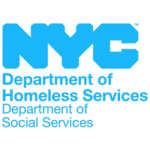

![]() Website
Website
Department of Finance
Dial 311
Tenants that qualify for the NYC Rent Freeze Program for Tenants with Disabilities (DRIE) can have their rent frozen and be exempt from future rent increases. This does not lower your rent but only keeps it from increasing.
To be eligible for DRIE, you must meet the following requirements
► You must be at least 18 years old.
You must receive one of the following:
► Supplemental Security Income (SSI)
► Social Security Disability Income (SSDI)
► Disability-related Medicaid (if you have received either SSI or SSDI in the past)
► Veterans Affairs Disability Pension
► Veterans Affairs Compensation
► United States Postal Service (USPS) Disability Pension
► United States Postal Service (USPS) Disability Compensation
► You must live in an eligible apartment type.
► You must be named on the lease or the rent order or have been granted succession rights to the apartment.
Also
► The apartment must be your primary residence, meaning you live there for most of the year.
► You must spend more than one-third of your monthly household income on rent.
► The total combined income for all members of your household must be $50,000 or less in the prior calendar year (DRIE records all income sources, taxable, and non-taxable. You can’t deduct your medical expenses and Medicare premium).
More information on eligibility at Disability Rent Increase Exemption.
Application
Complete the DRIE Initial Application. You can submit your application online by signing up with the Department of Finance or by sending it to New York City Department of Finance Rent Freeze Program – DRIE P.O. Box 3179 Union, NJ 07083
More information about the application at Disability Rent Increase Exemption.
Updated on December 13, 2020
 Prevention Assistance and Temporary Housing (PATH)
Prevention Assistance and Temporary Housing (PATH)
151 East 151st Street, Bronx, NY 10451
718-503-6400
Families with children experiencing homelessness can apply for shelter at the Department of Homeless Services’ Prevention Assistance and Temporary Housing (PATH) center.
Services
PATH will identify housing needs, provide resources to help prevent homelessness, and place families experiencing homelessness into a shelter. During the application process, all families will be offered a temporary shelter placement. PATH is open for 24 hours daily (including holidays and weekends), and applications are processed from 9am-5pm. Interpreter assistance is available.
Eligibility
Families who do not have alternative housing options will be offered a permanent shelter placement. Families with children younger than 21, families with a pregnant woman, and pregnant women are eligible.
All family members seeking shelter must be present and provide identification in the form of one of the following*:
–Form of ID with a picture and proof of age (ex: welfare ID, green card, driver’s license, passport, visa, picture employment card)
–Birth certificate
–Social Security card
–Medicaid card
–Identity card in the Public Assistance System
*If you are unable to locate one of the items listed, the Department of Homeless Services will try to help you find a form of identification.
If you are working you must provide your most recent pay stub.
How It Works
Once you arrive at PATH, you will first be interviewed by a Human Resources Administration (HRA) caseworker, who will inquire about your living situation and explain the services that may help you avoid entering shelter- including family mediation, anti-eviction legal services, out-of-city relocation assistance, Family Homelessness Eviction Prevention Supplement (FHEPS), or a One-Shot Deal through HRA.
You may be assigned a temporary shelter placement for up to 10 days while DHS investigates the information provided during the interview. Based on the investigation, DHS determines whether you are eligible for shelter, based on whether you have fully cooperated with the application and eligibility process and/or have other housing options available to you.
To learn more about how to apply, visit the PATH website or download this brochure.
 PATH es un programa de albergue temporal para las familias que no tienen opciones alternas para vivir en una casa. Si este es su caso, considera aplicar al programa PATH. Sin embargo, recomendamos que primero explores los servicios que ofrece HomeBase.
PATH es un programa de albergue temporal para las familias que no tienen opciones alternas para vivir en una casa. Si este es su caso, considera aplicar al programa PATH. Sin embargo, recomendamos que primero explores los servicios que ofrece HomeBase.
Cómo functiona PATH: Una vez llegues a las oficinas de PATH, serás entrevistado por un administrador de casos quien preguntará por tu situación de vivienda. Este también explicará los servicios que ayudarán a evitar entrar al sistema de albergue (mediación familiar, servicios anti-evicción, asistencia con reubicación fuera de la ciudad, o el Programa Suplementario para Evitar Evicciones de Familias sin Hogar, y un Trato Directo con el HRA.
Todos los miembros de la familia que buscan refugio deben estar presentes y proporcionar una identificación en la forma de uno de los siguientes*:
-Formulario de identificación con una foto y prueba de edad (por ejemplo: identificación de asistencia social, tarjeta de residencia americana, licencia de conducir, pasaporte, visa, tarjeta deempleo con foto)
-Certificado de nacimiento
-Tarjeta de seguridad social
-Tarjeta de Medicaid
-Identidad del Sistema de Asistencia Pública
* Si no puedes ubicar uno de los elementos enumerados, el Departamento de Servicios para Personas Sin Hogar intentará ayudarte a encontrar una forma de identificación.
Si estás trabajando, deberás proporcionar tu comprobante de pago más reciente.
Es posible que se te asigne una ubicación en un refugio temporal por hasta 10 días mientras el DHS investiga la información proporcionada durante la entrevista. Con base en la investigación, el DHS determina si eres elegible para refugio, en función de si has cooperado plenamente con el proceso de solicitud y elegibilidad y/o si existen otras opciones de vivienda disponibles para tu familia.
Para aprender más sobre el proceso, visita la página de PATH.
Updated on December 19, 2020